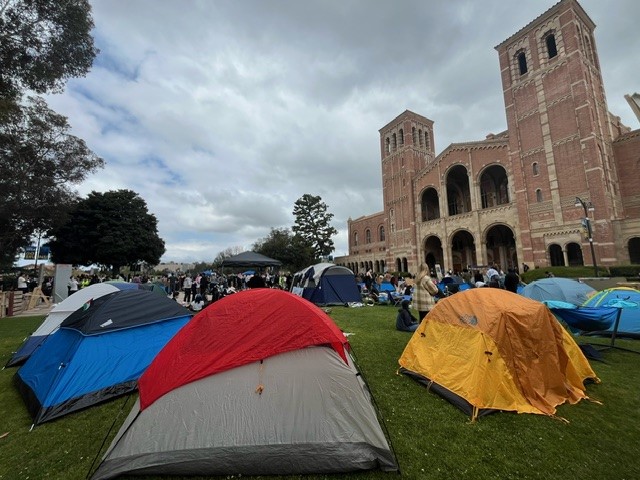Coastal waters off California are getting more acidic. Fall-run chinook salmon populations to the Sacramento River are on the decline. Conifer forests on the lower slopes of the Sierra Nevada have moved to higher elevations over the past half century.
That's just a snapshot of how climate change is affecting California's natural resources, a report released Thursday found.
"There's certainly reason for concern," said Dan Cayan, a climate scientist at the Scripps Institution of Oceanography who contributed to the report.
The findings are an update to a 2009 report that documented how a warming California is impacting the environment, wildlife and people.
Among the known impacts: Butterflies in the Central Valley are emerging from hiding earlier in the spring. Glaciers in the Sierra Nevada have shrunk. Spring runoff from snowmelt has declined, affecting Central Valley farmers and hydroelectric plants that rely on snowmelt to produce power.
The latest 258-page report, which cost $282,000 to produce, was compiled from existing climate studies and released by an arm of the California Environmental Protection Agency.
Officials hope it would spur the state and local governments to plan ahead and adapt to a hotter future.
Monitoring should continue "to reduce the impacts of climate change and to prepare for those effects that we cannot avoid," George Alexeeff, head of the state Office of Environmental Health Hazard Assessment, said in an email.
Annual average temperatures across the state have risen by about 1.5 degrees Fahrenheit since 1895, with the greatest warming seen in portions of the Central Valley and Southern California.
Levels of carbon dioxide, methane and other heat-trapping gases in the state increased between 1990 and 2011. In recent years, there has been a slight drop — the result of industries and vehicles becoming more energy efficient, the report said.
Some of the carbon dioxide in the atmosphere is being absorbed by the ocean, altering its chemistry. Scientists have documented changes to waters at Monterey Bay, which have turned more acidic in recent years, raising concerns about impact to marine life.
Ocean warming, among other factors, may be behind the dramatic drop of chinook salmon in Central California since 2004. And certain plant and animals species — such as conifers in the Sierra Nevada and small mammals in Yosemite National Park — have responded to a changing climate by moving to higher ground.
Expect more heat waves, wildfires and higher sea levels as the state warms, the report said.
Local
Get Los Angeles's latest local news on crime, entertainment, weather, schools, COVID, cost of living and more. Here's your go-to source for today's LA news.
The report "vastly overstates the impacts of greenhouse gases," said University of Alabama at Huntsville atmospheric sciences professor John Christy, who holds a minority view among climate scientists.
Carnegie Institution ecologist Chris Field, an acknowledged leader in the field of climate impacts, said the observations in the report "are more or less the gold standard of where we are now today" and provide a peek of the future.
More Southern California Stories:
- Deputies Bust Illegal Cockfighting in Lancaster
- State of Emergency Declared for SoCal Fire
- Watch: Two Men Barely Escape Car Crash
- Police Chase Ends on Dead-End Street
- Students Post Hundreds of Tests Online
- "Good Progress" Made on 80-Acre Bee Fire
- Arrest Made in 66-Year-Old OC Woman's Death
- CA Leads Nation in Fatal Train Crossing Crashes



